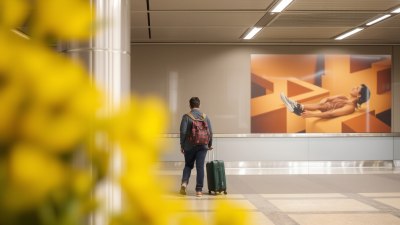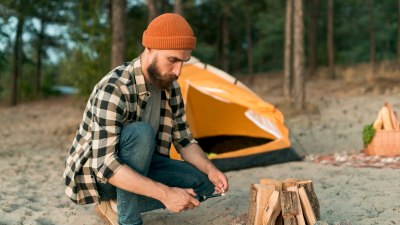How to Sleep Anywhere – Planes, Trains, and Questionable Hostels
Whether you’re on a red-eye flight, a noisy train, or stuck in a less-than-ideal hostel, getting good sleep while traveling is possible—if you know the tricks.

This image was created with the assistance of DALL·E
Travel is exciting, but sleeping on the go? Not so much. Between cramped airplane seats, rattling trains, and questionable hostel beds, getting a good night’s rest can feel impossible. But sleep is crucial when you’re on the move, and with the right strategies, you can rest anywhere—even in the worst conditions. Here’s how to sleep like a pro, no matter where you are.
Sleeping on Planes: The Art of the In-Flight Nap
Long-haul flights can be brutal, but smart preparation makes a huge difference. First, pick the best seat possible—window seats let you lean against something, while exit rows give extra legroom (but avoid seats near the bathrooms). If you can, choose a night flight to match your natural sleep cycle.
Once on board, block out distractions. Noise-canceling headphones or earplugs help drown out engine noise and chatty passengers, while an eye mask prevents sudden light disturbances. Bring a neck pillow for support, recline slightly, and use a blanket or scarf to get cozy. If turbulence keeps you awake, deep breathing techniques or light meditation can help you relax.
Surviving Sleepless Train Rides
Trains can be more comfortable than planes, but they come with their own challenges—sudden stops, noisy passengers, and constant motion. To sleep better, find a seat away from high-traffic areas like doors or dining cars. If possible, book a sleeper car for a more bed-like experience.
For long train journeys, layering is key—temperatures can fluctuate, so having an extra sweater or travel blanket helps. A hoodie can double as a makeshift eye mask, and keeping your bag as a footrest can make your seat feel more comfortable. White noise apps or sleep playlists can also help block out unexpected sounds.
Making the Best of a Bad Hostel Bed
Hostels can be budget-friendly and social, but they’re not always sleep-friendly. Thin mattresses, creaky bunk beds, and snoring roommates can turn your night into a challenge. The solution? Come prepared.
Always pack earplugs and an eye mask—two essentials for blocking out noise and light. If you’re in a shared dorm, choose a bottom bunk for less movement and better stability. Some travelers swear by using a travel sleep sack for extra comfort and cleanliness. And if your roommates are noisy, a polite request for quiet hours can sometimes do wonders.
Sleeping in the Weirdest Places
Sometimes, travel throws unexpected situations at you—airport floors, bus stations, or even a park bench (hopefully just for a nap!). If you find yourself needing rest in a less-than-ideal spot, look for a safe, quiet corner where you won’t be disturbed.
Use your backpack as a pillow and wrap a scarf or jacket around you for warmth. If you’re in a public space, setting a quiet alarm on your phone ensures you don’t oversleep. And when all else fails, caffeine and a power nap can help you power through until you find a proper bed.
The Verdict: Sleep is Possible Anywhere
With the right tricks—smart seating choices, noise blockers, and a little creativity—you can get quality sleep almost anywhere. Whether you're flying overnight, bouncing along on a train, or making the best of a hostel dorm, a few small adjustments can make a huge difference. So rest up—your next adventure depends on it.











